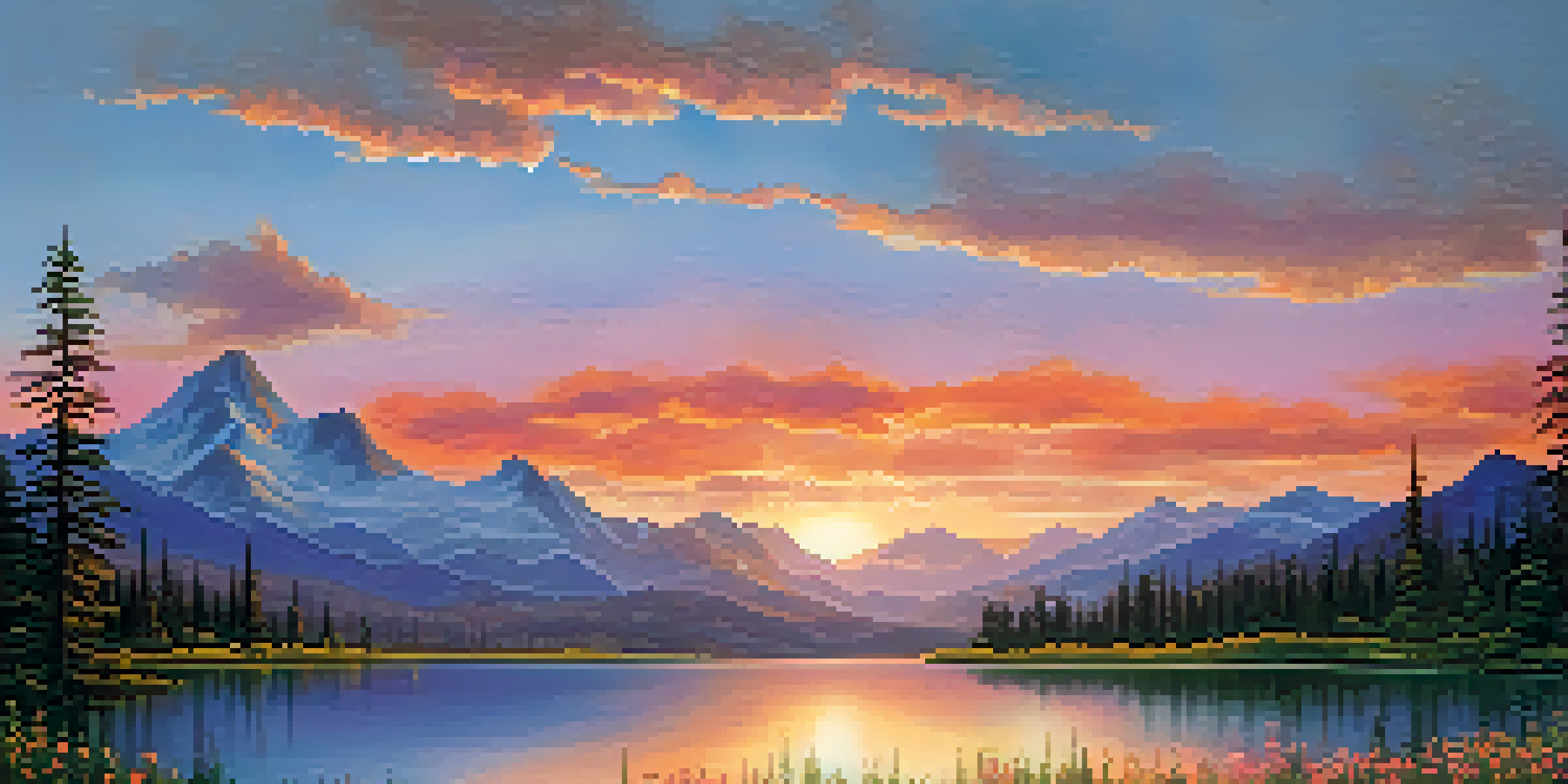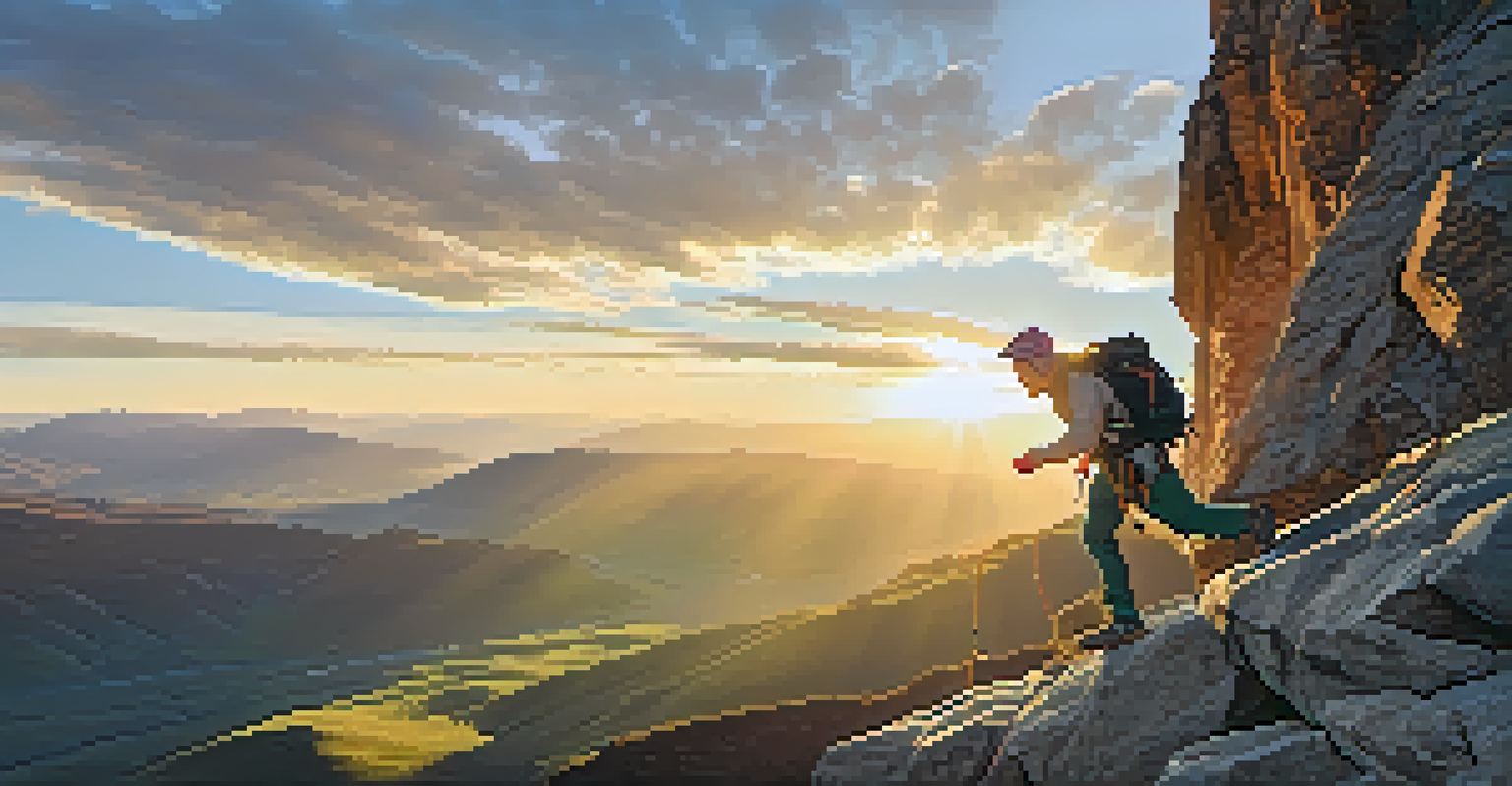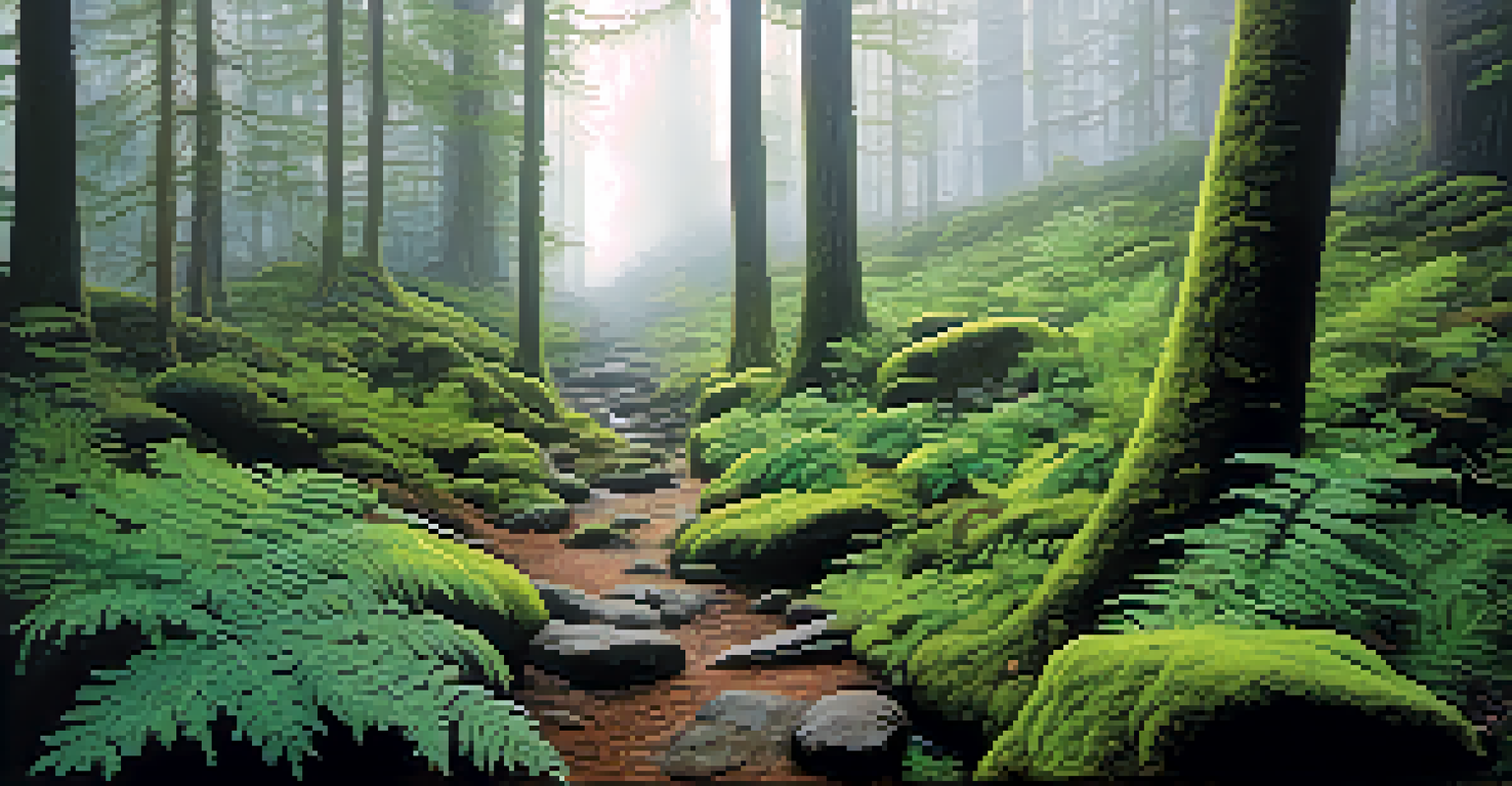Adventure Photography Tips: Capture Your Outdoor Experiences

Choose the Right Gear for Your Adventure
Selecting the right gear is crucial for adventure photography. A lightweight camera is ideal for hiking, while a waterproof option can save the day during unexpected rain. Don't forget to pack extra batteries and memory cards; you never know when the perfect shot will arise!
Photography is the story I fail to put into words.
Consider using a versatile lens that can adapt to various environments. A zoom lens allows you to capture distant landscapes, while a wide-angle lens is perfect for sweeping vistas. Think about the type of adventure you'll embark on and tailor your gear accordingly.
Lastly, invest in a sturdy tripod for stability, especially in low-light conditions. A good tripod can help you achieve stunning long-exposure shots, capturing the movement of water or the stars above. Remember, the right gear enhances your ability to capture breathtaking moments.
Plan Your Shots: Scout Locations Ahead of Time
Planning your shots can significantly improve your adventure photography. Research locations online to find stunning vistas or hidden gems that might not be on your radar. Use tools like Google Earth or Instagram to visualize potential spots.

Once you have a list of locations, consider the time of day you’ll be shooting. The golden hours—shortly after sunrise and before sunset—offer the most beautiful natural light, enhancing your photos. Make a note of the best times to be at each location for optimal lighting.
Choose Gear for Your Adventure
Selecting the right gear, including lightweight and waterproof options, enhances your ability to capture stunning photographs.
Don't hesitate to explore the area on foot before setting up your shot. Sometimes, walking around can lead to unexpected angles or compositions that you hadn’t initially considered. Embrace spontaneity; it often leads to the most memorable captures.
Master the Basics of Composition
Understanding composition is key to taking captivating photos. The rule of thirds is a great starting point; imagine dividing your frame into nine equal parts and placing your subject along those lines for a balanced shot. This simple technique can elevate your images dramatically.
Adventure is worthwhile in itself.
Leading lines are another powerful compositional tool. Look for paths, rivers, or fences that draw the viewer's eye into the scene, creating depth and interest. Incorporating these elements can guide your audience through the story your photo tells.
Don’t forget to consider foreground elements. Including something in the foreground adds dimension and context to your shot, making it more engaging. Whether it's a flower or a rock, these elements can enhance your overall composition.
Play with Light: Understanding Natural Lighting
Natural light is your best friend in adventure photography. Understanding how light interacts with your environment can transform your images. For instance, backlighting can create a magical glow, while side lighting adds depth and texture to your subjects.
Experiment with different lighting conditions. Shooting during overcast days can reduce harsh shadows and provide a soft, even light, ideal for detailed shots of nature. Conversely, shooting at sunset or sunrise can add rich colors and dramatic contrasts to your photographs.
Plan and Scout Your Locations
Researching and scouting locations ahead of time allows you to take advantage of optimal lighting and discover unique perspectives.
Always keep an eye on the direction of light and how it affects your subject. Adjusting your position slightly can make a world of difference in how light interacts with your scene. Being adaptable and observant is key to capturing beautiful outdoor moments.
Incorporate Movement for Dynamic Shots
Adding movement to your photos can create a sense of action and excitement. Whether it's capturing a friend jumping off a rock or a river rushing by, movement can bring your adventure photography to life. Use a faster shutter speed to freeze the action or a slower one for a dreamy effect.
Consider using panning techniques for a different approach. By moving your camera along with a moving subject, you can create a crisp image of the subject against a blurred background, emphasizing speed and dynamism. It’s a fun way to experiment with motion.
Don’t be afraid to capture candid moments too. Sometimes the best shots come from unplanned situations, like a spontaneous laugh or an unexpected splash. Keep your camera ready to document these genuine experiences that truly embody the spirit of adventure.
Embrace the Landscape: Capture the Environment
Nature is your backdrop, and embracing it can elevate your adventure photography. Take a moment to appreciate the surroundings and think about how you want to incorporate them into your shots. Wide-angle lenses are great for showcasing expansive landscapes, giving context to your adventures.
Consider the seasons and how they affect the scenery. Spring blooms, autumn colors, or winter landscapes offer unique opportunities for stunning photographs. Each season brings different moods and tones, so plan your adventures accordingly to capture these variations.
Post-Process for Stunning Results
Post-processing your photos can significantly elevate their quality, allowing you to showcase the beauty of your adventures.
Also, don’t forget to include the sky in your compositions. Dramatic clouds or a vibrant sunset can add a stunning element to your photos. A well-composed sky can elevate an ordinary shot into something truly spectacular.
Post-Processing: Enhance Your Adventure Photos
Post-processing is an essential step in adventure photography that allows you to bring your vision to life. Use editing software to adjust exposure, contrast, and saturation to enhance your images without overdoing it. Aim for a natural look that reflects the beauty of the scene.
Consider using presets or filters that align with your style. These can save time and help maintain a consistent aesthetic across your portfolio. Just remember to tweak them to suit individual photos, as every shot is unique.

Lastly, don’t shy away from cropping your images. Sometimes a slight adjustment can dramatically improve the composition. Take the time to refine your images; the goal is to showcase the adventure in all its glory, and a little editing can go a long way.
Share Your Work: Connect with the Adventure Community
Once you've captured and edited your adventure photos, it's time to share them with the world. Social media platforms like Instagram and photography blogs are perfect for showcasing your work. Engaging with other photographers can inspire you and help you grow your skills.
Consider joining local photography groups or online forums. These communities can provide valuable feedback and tips, as well as opportunities for collaboration. Sharing your experiences can open doors to new adventures and friendships.
Don't forget to tell the story behind your photos. Captions that share your adventure experiences create a deeper connection with your audience. Whether it's a challenging hike or a serene moment by a lake, your story adds value to your images and encourages others to explore the outdoors.